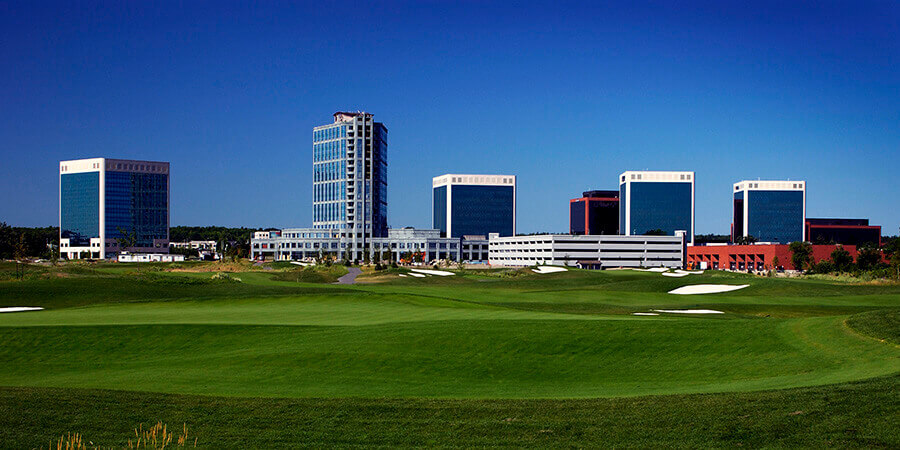
Commercial Real Estate Is Far From Dead
April 5, 2021
With 34 commercial office buildings offering more than 3.0 million square feet of Class A business space, KRP Properties is home to more than 250 companies and 13,500 employees. The nature of the local business ecosystem means the majority of these firms are active in growing the Canadian technology industry. This makes KRP the largest such office park in the country.
Wesley Clover created KRP in 1986 and continues to develop and manage the enterprise. As we all know, the massive work-from-home reaction to COVID-19 has fueled significant speculation about the place of commercial real estate and office complexes going forward. The management team at KRP thought the following firsthand insight could prove interesting.
Over the Last Quarter
It is a fact that remote working arrangements increased dramatically, particularly in technology companies which have the tools and experience to manage them well. In fact, the trend has been increasing among such companies for more than a decade. COVID-19 definitely accelerated the adoption. But as the months have passed and things have been inching toward a new form of normal, many KRP tenants have carefully reopened more of their office space (some essential areas such as technology development or testing labs remained functional throughout the pandemic). KRP management estimates that between one and two thousand people (or perhaps 10-15% of the employee total) are accessing their facilities on a typical weekday now.
This percentage is expected to keep growing if everything continues moving forward well.
The fact is while some smaller companies, particularly those with public facing services such as hospitality, definitely struggled, for others the ability to shift quickly to an even greater work-from-home model has enabled them to not only survive, but in several cases to actually thrive (based on the products they sell). As landlords and property managers, the result for KRP has been a mixed level of business. With minor exceptions, the government support programs that were launched, combined with new forms of revenue and financing, have meant a tenant exodus from traditional office space has not become the reality.
What Lies Ahead
As a guess for what the future may hold, we come back to the nature of business for KRP tenants. Again, they are technology centric companies for the most part. Many have been embracing flexible work environments for several years. But they still need to provide destinations for many coworking, specialized, team, management and other functions of the business. The desire going forward is likely to be more of a hybrid approach to the use of their office space, offering employees the best options for the roles and responsibilities they have while also providing for a tightly integrated, collaborative and growth oriented culture.
No one solution will work for all, but the following are factors now being considered:
- Tenants are inquiring about the availability of shorter term leases.
- They are looking for more flexible options in terms of space allocation, ensuring they comply with all government guidelines or regulations as part of that (i.e., social distancing).
- The open concept floor plans and even desk sharing arrangements that became popular previously are being reevaluated. Areas for distancing, quiet rooms, more private temporary workstations and even traditional closed offices are likely to see a certain return to favour.
- Video conferencing has been established as invaluable now, thanks to the advances in platform and networking technologies underlying it. This work tool is here to stay, but its use will be blended with in-person engagements of all sorts, meaning meeting rooms and other such spaces will still be required.
- The increased awareness of, and need for, hygiene and security will impact the architectural detailing of office spaces, including more touchless functionality in infrastructure such as doors and elevators, and even innovative new self disinfecting materials for use in common areas.
Notwithstanding such innovations, cleaning/sanitizing practices will remain paramount.
This list will evolve, and the responsibility for implementation and adoption will be a shared one between tenant and landlord/ property manager. It will definitely amount to change in the commercial real estate landscape. But as many like to say, change is a constant, and KRP has always been at the forefront of researching and adopting the best new technologies and practices for the benefit of their tenants and the underlying business. This chapter in their history will be no different. The belief remains strong that commercial real estate is far from dead. krpproperties.com